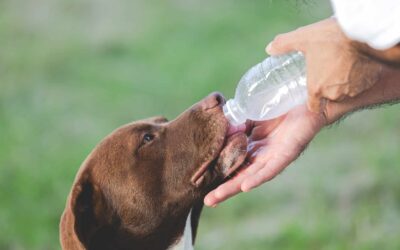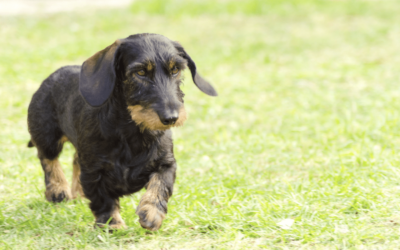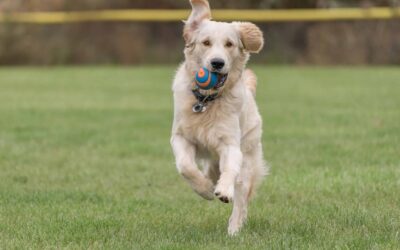The List of 19 Most Common French Bulldog Health Issues

Have you given any thought to getting a French Bulldog as a fluffy pet for your home? It shouldn’t come as much of a surprise that they are one of the most popular breeds, given that they have such endearing characteristics and charming, wrinkled features. Like all other dog breeds, French bulldogs are susceptible to several health problems, which you should be aware of. In this blog post, we’ll take a closer look at the 19 most common health issues that French Bulldogs face, so you can make an informed decision about whether a Frenchie is the right for you. So, let’s dig in!
Overview of 19 Most Common French Bulldog Health Issues
- Hip Dysplasia: A condition where the hip joint is not formed properly, leading to arthritis and mobility issues.
- Allergies: Frenchies can be prone to allergies, which can cause skin irritation, itching, and respiratory issues.
- Deafness: Some French Bulldogs are born deaf or may develop hearing loss as they age.
- Cherry Eye: A condition where the third eyelid prolapses and becomes visible as a red lump in the corner of the eye.
- Brachycephalic Airway Syndrome: A combination of respiratory issues caused by the breed’s short snout and flat face.
- Conjunctivitis (Pinkeye): An infection or inflammation of the conjunctiva, the thin layer of tissue that covers the eye.
- Heat Stress: Frenchies are sensitive to heat and can suffer from heat stroke or exhaustion in hot weather.
- Stenotic Nares (pinched or narrow nostrils): A condition where the nostrils are too small, making breathing difficult.
- Laryngeal Collapse: A condition where the cartilage in the larynx weakens, causing difficulty breathing and a honking cough.
- Tracheal Collapse: A condition where the rings of cartilage in the trachea weaken, leading to breathing difficulties and a honking cough.
- Elongated Soft Palate: A condition where the soft palate at the back of the throat is too long, causing breathing difficulties and snoring.
- Hemivertebrae: A congenital spinal deformity that can cause pain, mobility issues, and in severe cases, paralysis.
- Intervertebral Disc Disease: A condition where the discs between the vertebrae in the spine rupture or herniate, causing pain and mobility issues.
- Degenerative Myelopathy: A neurological disease that affects the spinal cord and causes weakness and paralysis.
- Entropion: A condition where the eyelid folds inward, causing irritation and damage to the cornea.
- Distichiasis: A condition where extra eyelashes grow on the eyelid, causing irritation and scratching of the cornea.
- Cataracts: A clouding of the lens in the eye that can cause vision loss.
- Cleft Palate: A congenital disability where there is a gap in the roof of the mouth, leading to difficulty eating and breathing.
- Von Willebrand’s Disease: A bleeding disorder where the blood does not clot properly, causing excessive bleeding.
Let’s discuss all these French Bulldog health issues in detail.
Hip Dysplasia in French Bulldogs
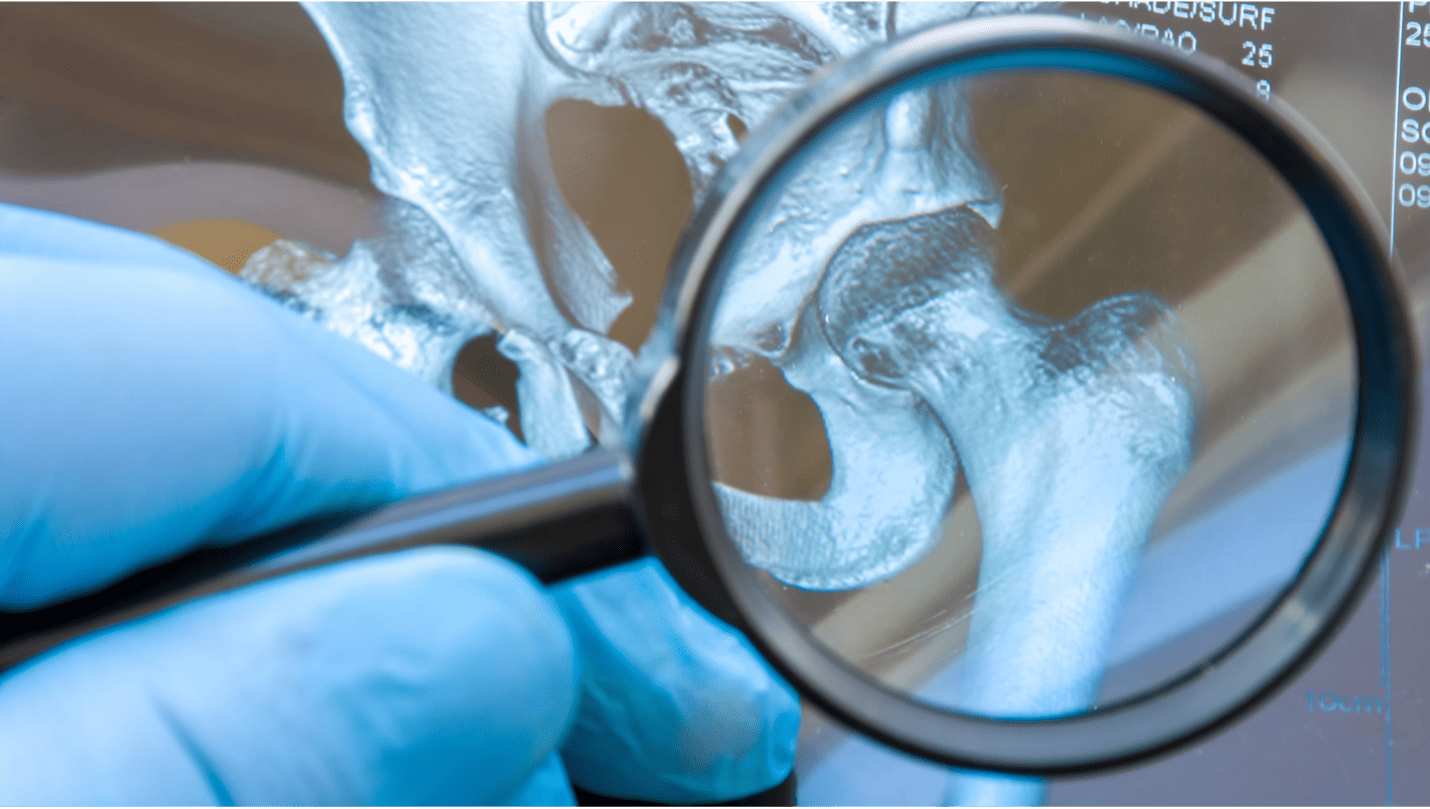
Hip dysplasia is a common orthopedic problem affecting many dog breeds, especially French Bulldogs. It is a hereditary disorder that causes the hip joint to grow abnormally, which results in discomfort, pain, and mobility difficulties. You must take your Frenchie to the veterinarian as soon as possible if you have any reason to believe he or she may suffer from hip dysplasia. The following is essential information regarding hip dysplasia in French Bulldogs:
Hip Dysplasia in French Bulldogs: What Are the Symptoms?
The following are some of the most often observed signs of hip dysplasia in French Bulldogs:
- Clicking sound during walking
- Difficulty rising
- Limping or lameness
- Pain or stiffness in the back legs of the animal
- Decreased activity or intolerance for exercise
- Loss of muscle mass
- Bunny hopping gait
You must make an appointment with your pet’s veterinarian as soon as possible if you observe any of these symptoms in your French Bulldog. Your veterinarian can help you select the most appropriate course of treatment.
What Are the Main Causes of Hip Dysplasia in French Bulldogs?
Genetic susceptibility is the primary factor responsible for hip dysplasia in French Bulldogs. However, additional variables such as being overweight, having rapid growth, or not getting appropriate nutrients might worsen the issue. It is essential to keep your French Bulldog at a healthy weight by ensuring that they consume nourishing, well-balanced food and get enough exercise regularly to reduce the risk of hip dysplasia.
How to Prevent Hip Dysplasia in French Bulldogs?
There are several things that French Bulldog owners may do to reduce the likelihood that their pet will develop hip dysplasia, even though genetics play a substantial influence in the condition. First and foremost, keeping your dog’s weight at a healthy level is of the utmost importance. Being overweight may make hip problems worse, as well as increase the possibility of getting them. If you are unsure whether your dog is overweight, you can take them to the vet for a weigh-in and consultation, or you can visit this guide, “Is My Dog Overweight?” having all the necessary information.
In addition to preserving a healthy weight, ensuring that your French Bulldog gets an appropriate amount of activity is paramount. Participating in regular physical exercise can assist in developing and maintaining strong muscles and joints, both of which can assist in preventing hip dysplasia. However, it is essential to be certain that the physical activity you choose suits the age, breed, and specific requirements of your dog’s health.
Lastly, making sure that your French Bulldog consumes a diet that is well-balanced and rich in nutrients is another way to reduce the risk of hip dysplasia. You must be aware of the foods your dog can and cannot consume, as this will help you determine whether or not your dog needs a specialized diet to meet its individual requirements. Check out the Dog Weight Loss And Keeping Odie Healthy guide to learn more about keeping a nutritious diet for your French Bulldog.
How to Treat Hip Dysplasia in French Bulldogs?
Regarding hip dysplasia in French Bulldogs, a few treatment options are available, ranging from medical and physical therapy to surgical intervention. The severity of the problem and the specific requirements of your French Bulldog will determine which treatment option is the most appropriate. The following are some of the therapeutic options that are now available:
- NSAIDs to reduce inflammation and pain
- Physical therapy to improve muscle strength
- Controlling a dog’s weight to ease the stress on one’s joints
- Joint supplements for improved joint health
- Surgical intervention in more serious cases
Most Common Hip Dysplasia Surgeries:
Surgery could be required for severe cases of hip dysplasia in French Bulldogs. The following is a list of the most frequent types of surgical procedures that are performed to treat this condition:
Juvenile Pubic Symphysiodesis (JPS)
This surgery is often carried out on puppies who are between 12 and 20 weeks old. The pelvic vertebrae are reshaped and stabilized during the surgical procedure to prevent hip dysplasia from developing in the puppy as it grows.
Double or Triple Pelvic Osteotomy (DPO/TPO)
In most cases, this procedure is performed on young pups who are less than 10 months old. It requires making pelvis incisions to realign the hip joint and restore its ability to function normally.
Total Hip Replacement (THR)
Total hip replacement (THR) is a significant operation that involves replacing the natural hip joint with an artificial one. It is usually reserved for really severe situations in which previous therapies have been unsuccessful.
Femoral Head Ostectomy (FHO)
The head of the femur bone must be removed during the procedure to make room for the muscles supporting the hip joint. It is commonly advised for canines that are either smaller in size or have hip dysplasia that is not as severe.
Allergies
Allergies in French Bulldogs: What Are They and What Kind Can They Develop?
A French Bulldog’s immune system can react to allergens like humans. These allergies may be brought on by various allergens, including dust mites, pollen, mold, or even specific types of food. To learn more about the top causes of dog allergies, you can visit this informative article on PetMD: Allergies in Dogs and Puppies: Signs, Causes, and Treatment.
Allergies in French Bulldogs: What Are the Symptoms?
The signs and symptoms of an allergic reaction in French Bulldogs might change based on the nature of the allergy as well as the degree to which it is triggered. Symptoms such as itchiness, redness, swelling, and sores on the skin, as well as wheezing, coughing, and watery eyes, are some of the more prevalent ones. You must take your French Bulldog to the veterinarian as soon as possible if it displays any of these symptoms.
Allergies in French Bulldogs: List of Common Allergens
As was said earlier, French Bulldogs are susceptible to developing allergies to various allergens. Pollen, dust mites, mold, certain kinds of food, and flea bites are some allergens people are most likely to be allergic to. Your French Bulldog’s veterinarian may suggest getting him or her tested for allergies to determine what the dog is allergic to.
Treating Allergies in French Bulldogs:
Probiotics for Your Furry Friend
The use of probiotics in the treatment of some allergic conditions in French Bulldogs can be beneficial. Beneficial bacteria can improve your dog’s digestive health, which in turn helps strengthen its immune system and lessen the intensity of allergic responses. To learn more about pet probiotics, you can visit this article on PetMD: Probiotics for Pets.
Customized Food Diet
A specialized feeding regimen may be required for French Bulldogs suffering from food allergies to prevent the onset of allergic responses. Your dog’s veterinarian will be able to provide you with a list of foods that are acceptable or safe for your dog to consume, in addition to a list of foods that should be avoided. To learn more about what foods are safe for dogs, you can visit this article A List of Foods Your Dog Can & Can’t Eat.
Deafness in French Bulldogs
Several factors contribute to the high prevalence of deafness in French Bulldogs. Concerning this matter of health, the following are some essential facts to keep in mind:
The Role of Color in Hearing
Congenital deafness is more common in French Bulldogs with white coat colors, making them more likely to be affected by the condition than those with other coat colors. This is because the white-coating gene’s specific expression patterns might lead to deafness.
What Are the Symptoms of Deafness in French Bulldogs?
Your French Bulldog may be experiencing hearing loss if they don’t respond to your directions, bark excessively, or startle more easily. If you have any reason to believe that your Frenchie has hearing loss, you must take them to the veterinarian as soon as possible so that they can identify the underlying problem and devise an effective treatment strategy.
Cherry Eye in French Bulldogs
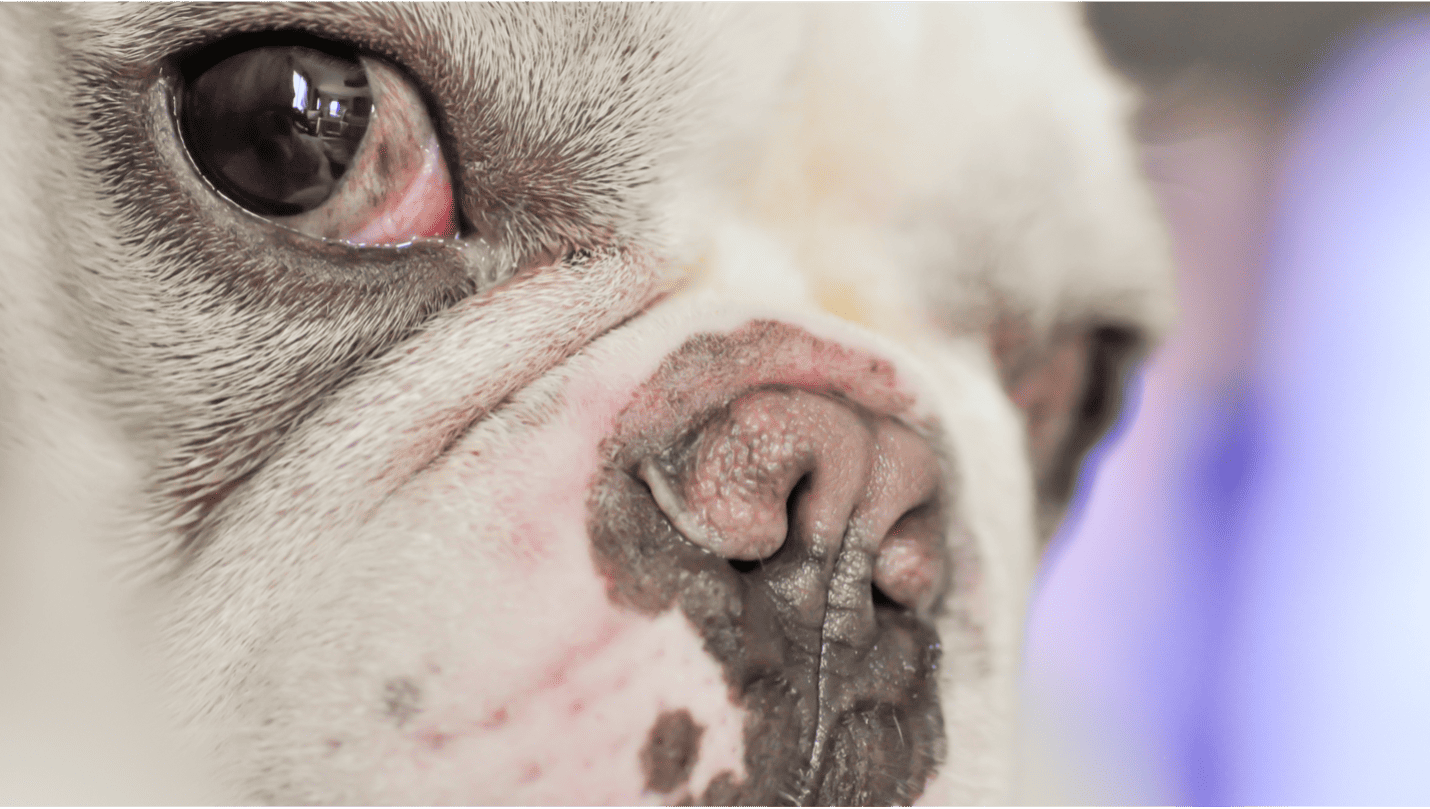
Cherry eye is a frequent health concern that affects French Bulldogs. It develops when the third eyelid gland protrudes from the inner corner of the eye, giving the impression of a red growth in the shape of a cherry.
What Are the Main Causes of Cherry Eye in French Bulldogs?
The reason French Bulldogs have cherry eyes is unknown; however, it has been linked to a lack of strength in the connective fibers that hold up the gland that secretes tears. Because of this weakening, the gland may prolapse and become visible in the patient’s field of vision. In addition, there is a possibility that genetics play a part in the development of cherry eye in French Bulldogs.
Brachycephalic Airway Syndrome in French Bulldogs
French Bulldogs and other brachycephalic dog breeds with short noses and flat features are prone to developing a collection of respiratory conditions known as brachycephalic airway syndrome, abbreviated as BAS for short. The French Bulldog can develop various health problems due to this illness, including difficulty breathing, snoring, wheezing, and sneezing.
Elongation of the soft palate, stenosis of the nares, everted laryngeal saccules, and hypoplasia of the trachea are just a few of the many problems that are linked with Brachycephalic Syndrome. It may be more difficult for French Bulldogs to breathe due to a blockage in the upper airway that several illnesses can bring on. This can, over time, lead to persistent respiratory issues and possibly heart failure.
To learn more about Brachycephalic Airway Syndrome and its impact on French Bulldogs, you can visit this PetMD article, which provides a comprehensive guide about this syndrome.
Conjunctivitis (Pinkeye) in French Bulldogs
A common issue affecting the eyes of French Bulldogs is conjunctivitis, more often known as pink eye. A wide range of causes, including allergies, irritants, infections, and trauma, are all potential triggers for this condition.
Conjunctivitis (Pinkeye) in French Bulldogs: What Are the Symptoms?
In French Bulldogs, conjunctivitis can cause the eye to become red, swollen, discharge, and itchy. Other symptoms include discharge from the eye. In addition to that, they could rub their eyes, blink excessively, or squint. Many different things, including allergens, irritants, infections, and even trauma, have been linked to the development of conjunctivitis.
How to Treat Conjunctivitis (Pinkeye) in French Bulldogs?
Treatment for conjunctivitis in French Bulldogs might vary greatly depending on the condition’s underlying cause. If bacteria cause the problem, a veterinarian may provide antibiotic eye drops or ointment to treat the condition. Antiviral medicine may be prescribed if a viral infection is the root cause. It is possible to alleviate allergy-related symptoms and decrease inflammation with the help of steroid-containing eye drops or ointments. If your French Bulldog exhibits signs of conjunctivitis, you should have them checked out by a veterinarian as soon as possible. If left untreated, infections can progress to more serious eye issues. You should also avoid using eye drops or ointments that may be purchased over the counter since these products may include substances harmful to your dog’s eye.
Heat Stress
When the body of a French Bulldog cannot control its own temperature and, therefore, overheats, the dog experiences a condition known as heat stress. Not receiving treatment might result in heat exhaustion or heat stroke, both potentially fatal conditions.
Heat Stress: What Are the Causes?
There are a variety of potential causes of heat stress, including the following:
- Prolonged exposure to hot temperatures and muggy air
- Lack of access to shade or cool water
- Overexertion during playtime
- Being left in a hot vehicle or other enclosed space
Due to their brachycephalic (short-nosed) skull form, French Bulldogs are more likely to experience heat stress since it is more difficult for them to cool down by panting.
Heat Stress: What Are the Symptoms?
The following are some of the signs that your French Bulldog may be experiencing heat stress:
- Heavy panting
- Excessive drooling
- Reddened gums
- A speeding pulse
- Sluggishness or collapse
- A sick stomach or loose stools
- Convulsions or coma (in more serious situations)
Heat Strokes: What Are the Signs?
A more severe and potentially life-threatening type of heat stress is known as heat stroke. The following are symptoms of heat stroke in French Bulldogs:
- Body temperature of 106°F (42°C) or higher
- Lack of balance or disorientation
- Seizures or collapse
- Unconsciousness
How to Treat Heat Stress?
You must take prompt action if you believe your French Bulldog suffers from heat stress or heat stroke. Place your dog in a more comfortable location and give them some cool, clean water to drink. Their body temperature can be lowered further by wetting their fur with cool water (not cold water). Do not use ice water or ice packs since doing so might cause the blood vessels to tighten, preventing heat from escaping the body.
You should also seek veterinary treatment as soon as possible since heat stroke can be fatal if it is not treated. In order to assist in cooling down your dog and avoid dehydration, your veterinarian may inject fluids through an intravenous line. In addition to this, they may monitor your dog’s vital signs and give other forms of supportive care as required. When it comes to heat stress, prevention is the most important thing, so be sure to keep your French Bulldog cool and hydrated, and try to avoid subjecting them to high temperatures for lengthy periods of time.
Stenotic Nares (Pinched or Narrow Nostrils)
Stenotic nares, often known as pinched or small nostrils, are frequent in French Bulldogs and affect the respiratory system. It occurs when the dog’s nostrils are either too tiny or have excessive tissue, which might make it difficult for the dog to breathe normally. This can make breathing difficult, especially during physical activity or high temperatures.
Stenotic Nares (Pinched or Narrow Nostrils): What Are the Main Causes?
It is still unclear what causes stenotic nares in French Bulldogs, but it is thought to be a hereditary disorder that can be passed down from generation to generation. Because of their short muzzles and broad features, brachycephalic breeds like French Bulldogs and other similar canines are predisposed to developing this illness. A narrowing of the nostrils and other respiratory problems might result from overbreeding for these characteristics.
How to Treat Stenotic Nares in French Bulldogs?
The severity of the problem will likely determine which treatment options are available for stenotic nares in French Bulldogs. In less severe situations, your veterinarian may suggest adjusting your exercise program or losing weight to alleviate your breathing troubles. Surgery may be required in more severe instances in order to expand the nostrils and increase airflow across the body.
To do surgery to treat stenotic nares, a little portion of tissue must be removed from the nostrils. This helps to enlarge the entrance. This can assist in minimizing the amount of respiratory distress the dog is experiencing and make it simpler for the dog to breathe. The surgical procedure is normally carried out under general anesthesia, and the patient would need to spend some time in the hospital recovering afterward.
Laryngeal Collapse
It is typical for French Bulldogs to suffer from a respiratory illness known as laryngeal collapse. This condition causes the larynx cartilage rings to collapse, making breathing difficult for the dog. This illness, which can cause considerable discomfort to the dog’s respiratory system, is most frequently observed in middle-aged or older dogs.
Laryngeal Collapse: What Are the Symptoms?
The severity of the illness might cause the symptoms of laryngeal collapse to range from none to all of the above. Among the most common symptoms are:
- Loud, harsh breathing sounds
- Wheezing or blaring sounds while sleeping
- Increased respiratory effort, such as panting
- In severe cases, cyanosis (blue coloring of the tongue or gums) develops
Laryngeal Collapse: What Are the Causes?
Although the exact causes of the laryngeal collapse are unknown, researchers believe it is due to hereditary and environmental factors. Because of their small muzzles and flat features, certain breeds, such as French Bulldogs, are more likely to suffer from laryngeal collapse than others. In addition, factors such as obesity, persistent respiratory infections, or damage to the larynx may have a role in the development of the condition.
How to Treat Laryngeal Collapse?
The treatment for laryngeal collapse may be determined by how severe the problem is. In less severe situations, the management of respiratory symptoms may need nothing more than a reduction in the amount of activity or weight loss. In more severe situations, surgery may be required to enhance the patient’s ability to breathe.
How to Treat Mild Cases?
In less severe situations, your veterinarian may suggest that you adjust your pup’s exercise program or lose some weight to alleviate your breathing troubles. Managing any underlying respiratory infections or allergies that may be contributing to the disease may also be a component of this course of action.
How to Treat Moderate to Severe Cases?
Surgery can be required to enhance the patient’s breathing ability in moderate to severe situations. The placement of prosthetic implants is one surgical technique that might be considered in order to assist in supporting the larynx and enhancing airflow. Another possibility is a laryngeal tieback procedure, in which the arytenoid cartilage is shifted to a more open position by surgery to increase airflow.
How to Treat Severe, Persistent Cases?
In severe and continuing cases, a tracheostomy may be required in order to restore the dog’s ability to breathe normally. During this procedure, a hole is created surgically in the trachea so that air may go around the larynx and reach the lungs more directly. This therapy option is normally saved for situations where all other treatment choices have been tried but unsuccessful or not viable.
Elongated Soft Palate (ESP)
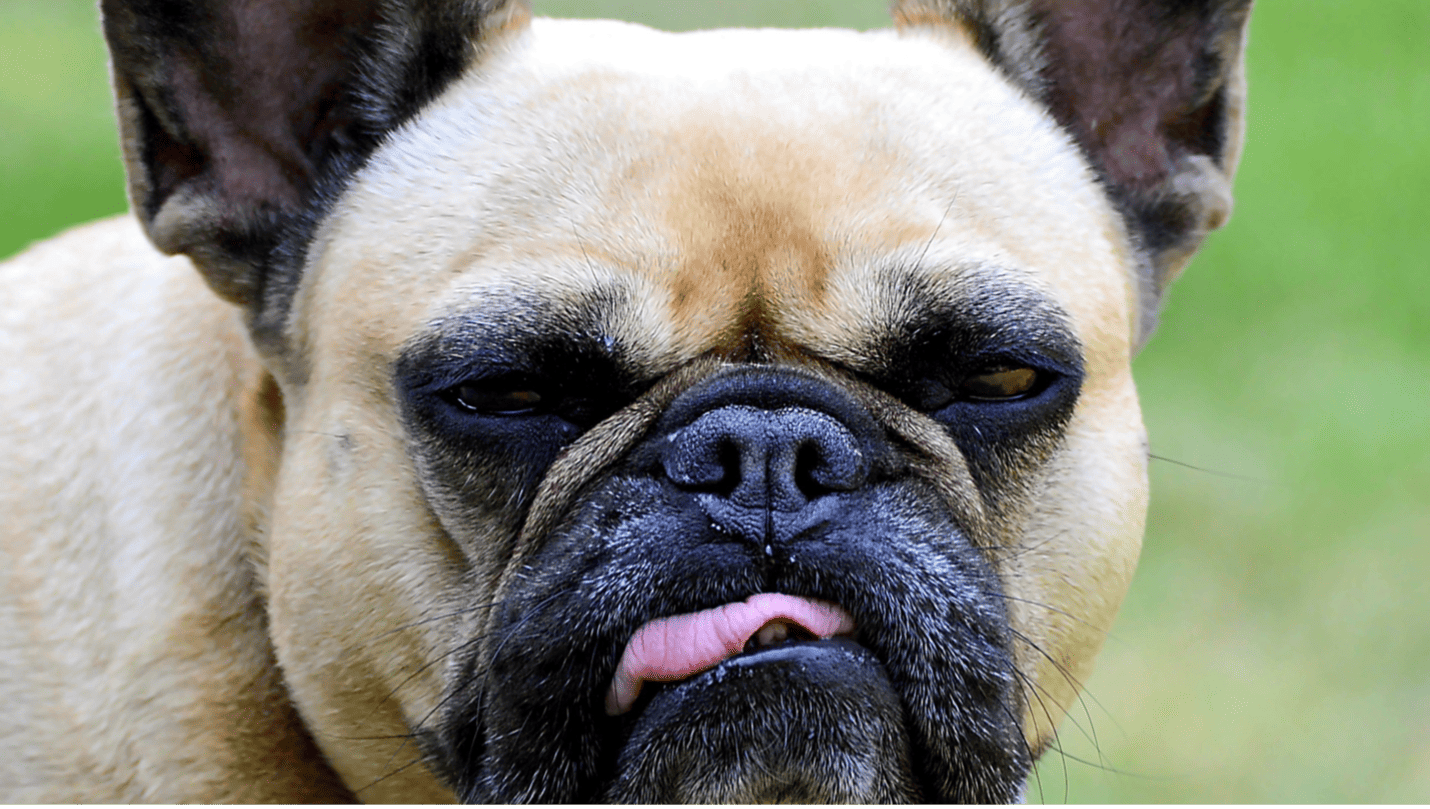
Elongated soft palate, often known as ESP, is a rather frequent defect in brachycephalic dog breeds such as French Bulldogs. During swallowing, the soft palate, a flap of tissue located at the rear of the mouth, plays an important role in preventing food and water from getting into the airway. When a dog has ESP, the soft palate becomes extended, which can cause it to partially block the airway and make it difficult for the dog to breathe.
Elongated Soft Palate: What Are the Symptoms?
In French Bulldogs, the condition known as the elongated soft palate can cause various symptoms, including loud breathing (particularly during activity or excitement), choking, snoring, and trouble breathing. Dogs that are affected by this condition may also develop respiratory distress, which, if ignored, can be quite dangerous.
It is essential to seek the care of a veterinarian for an appropriate diagnosis since other respiratory disorders, such as brachycephalic airway syndrome, can cause symptoms identical to those of this ailment.
How to Treat Elongated Soft Palate in French Bulldogs?
In French Bulldogs, surgical repair almost always treats the Elongated Soft Palate. During the procedure, some of the elongated tissue will be removed. This will make it easier to breathe by lowering the amount of restriction in the airway. In most cases, the recovery period following surgery lasts for several weeks. During this time, the dog must be properly observed and kept quiet. Complications following surgery, such as edema or infection, can occasionally arise, resulting in the need for additional medical attention. Improved odds of a positive outcome can be achieved by beginning diagnosis and therapy as soon as possible.
Tracheal Collapse
Tracheal collapse is a disorder in which the cartilage rings that support the trachea become weakened and lose shape, resulting in partial or total airway collapse. Several different factors can cause tracheal collapse. This issue is fairly prevalent in small dog breeds like French Bulldogs and other similar breeds.
Tracheal Collapse: What Are the Symptoms?
In French Bulldogs, the symptoms of tracheal collapse can range from minor to severe and include a honking cough, trouble breathing or wheezing, inability to tolerate activity, choking, and even fainting. These symptoms could become more obvious when your pup does more exercise, becomes excited, or is exposed to irritants like cigarette smoke or dust.
How to Treat Tracheal Collapse in French Bulldogs?
The severity of the problem will determine which therapy options are available for the tracheal collapse in French Bulldogs. Loss of body weight, using cough suppressors, and staying away from irritants that might bring on symptoms are all potential treatments for mild instances.
Medication may be administered in more severe situations to help open the airways and reduce inflammation. Examples of such drugs include bronchodilators and corticosteroids. In extreme situations of respiratory distress, oxygen treatment may be required to treat the patient.
In some cases, tracheal collapse may also be treatable through surgical procedures. The insertion of stents to support the trachea or surgical rebuilding of the trachea may be among these options.
Hemivertebrae
A congenital spine deformity known as hemivertebrae occurs when a portion of one or more vertebral column bones does not form correctly during the process of fetal development. This leads to either wedge-shaped or butterfly-shaped vertebrae, both of which can lead to various spinal disorders.
The severity of the problem varies depending on the location of the problem and the number of vertebrae that are impacted. Hemivertebrae can lead to spine curvature, nerve compression, and neurological impairments. In extreme circumstances, it can also bring about paralysis or even death.
Irregular curvature of the spine, a noticeable malformation of the back, or unequal height at the shoulder or hip can all be symptoms of hemivertebrae. Extreme instances may also accompany symptoms such as bowel or bladder incontinence, numbness, tingling, or paralysis in the legs.
The severity of the problem will determine which treatment options are available for hemivertebrae. In less severe situations, having routine checkups with a physician may be all that is required. In more severe situations, surgery may be required to stabilize the spine, straighten the curvature of the spine, and remove any deformed vertebrae. The severity of the deformity and the specifics of each patient’s situation will determine the kind of surgery that can be performed. Rehabilitative measures and physical therapy could also be required to assist in the function and mobility restoration process. Improving outcomes for those affected by hemivertebrae through early discovery and treatment of the condition is possible. This can help prevent significant problems.
Intervertebral Disc Disease in French Bulldogs
Intervertebral Disc Disease, also known as IVDD, is a condition that affects the intervertebral discs, which are located in the spine and provide the function of cushions between the vertebrae. IVDD is a rather frequent disorder in French Bulldogs because of their distinctive body shape, which stresses their spinal discs more.
Herniated or ruptured discs can be caused by IVDD, which can put pressure on the spinal cord or nerve roots. IVDD can also cause discs to bulge outward. Because of the pressure, an individual may experience discomfort, weakness, loss of coordination, and even paralysis.
Intervertebral Disc Disease in French Bulldogs: What Are the Symptoms?
French Bulldogs frequently suffer from a spine condition known as intervertebral disc disease (IVDD), which can result in excruciating agony, paralysis, and even death. In French Bulldogs, symptoms of IVDD include difficulty walking or standing, dragging of the legs, lack of control over the urine or bowels, and a reduction in appetite. Some dogs may exhibit pain or discomfort, such as yelping or wailing when stroked or moved, and these behaviors might indicate that the dog is in distress.
It is essential to remember that not all French Bulldogs diagnosed with IVDD will immediately present with signs of the condition. Some dogs may have a “silent” version of the disease, which nonetheless has the potential to worsen over time and ultimately cause serious neurological issues.
Intervertebral Disc Disease in French Bulldogs: What Are the Causes?
Damage or degeneration of the intervertebral discs, which serve as shock absorbers between the vertebrae in the spine, can lead to the development of intervertebral disc disorder (IVDD). In French Bulldogs, intervertebral disc disease (IVDD) is frequently brought on by a confluence of hereditary and environmental causes.
The body of a French Bulldog is distinctive in that it is short and broad over the back, while the legs are on the shorter side. This can place additional strain on their spinal discs, making them more prone to injury as a result. In addition, certain French Bulldogs may inherit genetic traits that put them at a greater risk of getting IVDD than other French Bulldogs.
In addition to obesity, inactivity, and previous spinal injuries, these are also risk factors for the development of intervertebral disc disease (IVDD) in French Bulldogs. Intervertebral disc disease (IVDD) in French Bulldogs can be reduced by taking preventative steps such as ensuring the dog has a healthy body weight, getting enough regular activity, and avoiding activities that place additional stress on the spine.
Degenerative Myelopathy
Degenerative myelopathy, sometimes known as DM, is a degenerative neurological condition that can be found in canines of all breeds, including French Bulldogs. It is a condition that worsens with time and finally results in paralysis due to its impact on the spinal cord.
Degenerative Myelopathy in French Bulldogs: What Are the Causes?
It is believed that various causes, including age, immune system failure, environmental variables, and other underlying health issues like obesity, cause degenerative myelopathy (DM) in French Bulldogs. Because autosomal recessive inheritance is the method of inheritance, this means that both parents have to be carriers of the mutant gene for their pups to be at risk of developing the disease.
Degenerative Myelopathy in French Bulldogs: How Is It Diagnosed?
Regarding French Bulldogs, the condition known as degenerative myelopathy (DM) is often diagnosed based on clinical indications and the elimination of other possible causes of neurological dysfunction. Diagnostic procedures such as magnetic resonance imaging (MRI), computed tomography (CT) scans, and spinal fluid analyses might be done to eliminate other potential causes of neurological illness. In addition, genetic testing can be carried out to determine whether or not the dog possesses the gene mutation that is connected with DM.
How to Treat Degenerative Myelopathy in French Bulldogs?
Unfortunately, no treatment for degenerative myelopathy (DM) in French Bulldogs is available. Physical therapy, exercise, and pharmaceuticals, including pain relievers and anti-inflammatory drugs, are among the mainstays of treatment. The primary goal is to alleviate symptoms and halt or at least significantly delay the course of the condition. It’s possible that some dogs may fare better with the assistance of mobility devices like carts and slings to help them go about. In addition, the quality of the dog’s life may be improved by ensuring that it is kept at a healthy weight and by providing a living environment that is both pleasant and secure.
Entropion
Entropion is a common eyelid disorder that can afflict French Bulldogs and other breeds of dogs. It happens when the eyelid folds inward, which causes the eyelashes or hair to rub across the eye’s surface. It can also be caused by rubbing the eyes too much. This can cause the cornea to get irritated, which is painful, and it can even become damaged.
Entropion: What Are the Symptoms?
The most typical sign of entropion is an abnormally large amount of tear production or discharge from the eye. Dogs that are affected by this condition may also have ocular symptoms such as redness, puffiness, or discharge. In extreme circumstances, entropion can result in corneal ulcers or other significant eye disorders, which can potentially cause permanent vision loss.
How to Treat Entropion in French Bulldogs?
Surgery is usually required to repair the eyelid abnormalities resulting from entropion. The eyelid will be repositioned during the operation to prevent the eyelashes from pressing against the eye’s surface, which is the primary objective of the procedure. In some instances, a short-term solution, such as an interim tacking operation, may be used to remedy the issue at hand until the dog is of an appropriate age to undergo a more definitive surgical repair.
The effective healing of an incision and the avoidance of problems both depend on receiving post-surgical care. You may require eye drops or topical treatments to help decrease inflammation and speed up healing. In addition, owners of French Bulldogs should closely check their pets’ eyes for any indications of infection or other issues, and they should follow their veterinarian’s advice regarding when and how often to seek medical attention.
It is essential to remember that entropion in French Bulldogs might be inherited; hence, affected dogs shouldn’t be used for breeding purposes. In addition, having routine eye exams can assist in the early detection of entropion and prevent problems.
Distichiasis
Distichiasis is a disorder that develops when an additional row of eyelashes grows from the glands at the border of the eyelid. These abnormal eyelashes grow in a zigzag pattern across the eyelid. They have the potential to irritate Frenchie’s eye by rubbing on the surface of the eye, which may also result in other eye disorders.
Distichiasis in French Bulldogs: What Are the Symptoms?
The severity of the ailment can cause distichiasis in French Bulldogs to manifest in various ways, depending on the symptoms. It’s possible that patients with mild instances won’t have any symptoms at all, while those with more severe cases may experience the following:
- An abnormally high amount of blinking or squinting
- Red or inflamed eyes
- Severe eye discharge or tears
- Scratching the eye heavily
- Corneal ulcers
If you observe any of these signs in your French Bulldog, you need to make an appointment with your dog’s vet to perform an eye check as soon as possible.
How Is Distichiasis Diagnosed?
An in-depth eye examination is often required in order to diagnose distichiasis in French Bulldogs. Your veterinarian may use a specialized dye to assist in locating any more eyelashes that may be causing irritation to the eye’s surface. These eyelashes may be rubbing on the cornea. They may also use a magnifying lens to look more deeply at the eyelid and surrounding tissues.
In certain instances, your veterinarian may suggest further testing, like an ultrasound or MRI, to examine the severity of the eyelash growth and any damage that may have occurred to the eye.
How to Treat Distichiasis in French Bulldogs?
The severity of distichiasis in French Bulldogs and the existence or absence of associated ocular abnormalities have a role in determining how the condition should be treated. In some cases, the condition may not require treatment at all. If your French Bulldog is exhibiting any of these symptoms, some possible treatments are as follows:
- Electrocautery or cryotherapy
- Using medications, especially NSAIDs
- Surgical excision
Remember that distichiasis might return even after therapy has been administered; hence, continuous monitoring and follow-up care may be required. Maintaining a schedule of regular eye exams can assist in the early detection of any recurrence or associated eye disorders.
Cataracts in French Bulldogs
In French Bulldogs, cataracts are a disorder that causes the lens of the eye to become hazy, which can result in a loss of eyesight or impairment of vision. This condition can affect one or both eyes, and its severity can range from moderate to severe.
Cataracts in French Bulldogs: What Are the Symptoms?
Cataracts in French Bulldogs can present themselves in various ways, depending on the severity of the problem. In less severe cases, there may be no outward manifestations of the condition; however, more severe ones might result in the following:
- Cloudy appearance of the lens
- Difficulty navigating around things
- Having collisions with walls or other items
- Excessive squinting or blinking
- Behavioral changes, such as an increase in anxiousness or unwillingness
If you observe any of these signs in your French Bulldog, you need to make an appointment with your veterinarian to perform an eye check as soon as possible.
What Are the Main Causes of Cataracts in French Bulldogs?
A wide array of variables, including the following, have been linked to the development of cataracts in French Bulldogs:
- Due to their genetic makeup, certain French Bulldogs may have a higher risk of acquiring cataracts than other breeds of dogs. This may be more prevalent in specific breeds or lineages of animals.
- Age is a risk factor for cataract development, and this is especially true in more senior pets.
- Eye injuries, such as cuts or bruises, have been linked to the development of cataracts in certain people.
- Certain medical diseases, such as diabetes or hypothyroidism, might increase the chance of getting cataracts. Cataracts are a clouding of the eye’s natural lens that causes impaired vision.
Cleft Palate in French Bulldogs
A cleft palate is a congenital disorder characterized by a split or opening in the roof of the mouth. This can be present before birth in some cases. The capability of French Bulldogs to consume food and water and breathe normally may be negatively impacted as a result of this.
Cleft Palate in French Bulldogs: What Are the Symptoms?
The severity of the issue can cause French Bulldogs to display a wide range of symptoms associated with their cleft palate. In mild situations, there may be no obvious symptoms, but in more severe ones, the following can be caused by the condition:
- Trouble nursing or bottle-feeding
- Choking or gagging when eating
- Regurgitation of food or milk
- Several respiratory issues, including pneumonia
You must make an appointment with a vet as soon as possible if you observe any of these symptoms in your French Bulldog.
Von Willebrand’s Disease

Dogs that are affected by Von Willebrand’s Disease (vWD) have a disease that prevents their blood from clotting properly. This condition is brought on by a lack of or an anomaly in the von Willebrand factor, which is a protein that is essential to the process of blood clotting.
Von Willebrand’s Disease in French Bulldogs: What Are the Symptoms?
Regarding French Bulldogs, Von Willebrand’s Disease symptoms can range from mild to severe, depending on how far the disease has progressed. In mild situations, there may be no obvious symptoms, but in more severe ones, the following can be caused by the condition:
- Easy bruising
- Anemia
- Blood found in the feces or urine
- Bleeding from the gums or the nose
- Excessive blood loss as a result of injuries, cuts, or surgical procedures
Preventing French Bulldog Genetic Problems
French Bulldogs are predisposed to various hereditary or genetic health conditions like many purebred dog breeds. The severity of these problems, ranging from mild to severe, can substantially influence the dog’s overall health and quality of life. Working with breeders that have a good reputation and adhere to ethical standards is one of the most effective methods for preventing genetic issues.
Reputable dog breeders are those that put the physical and mental well-being of their canine charges ahead of financial gain. They usually do health exams on their breeding dogs, which may include genetic testing, to ensure that the dogs do not pass on any hereditary illnesses to their puppies. Additionally, they carefully select breeding pairings to reduce the likelihood of generating puppies with hereditary health problems.
Conversely, unscrupulous breeders profit from their dogs’ well-being and health when making breeding decisions. They may cut costs on health tests or breed dogs with genetic conditions already known to be problematic. This can lead to pups being born with major health problems, which can be quite upsetting for the new families who adopt them.
You may considerably lower the danger of your French Bulldog getting hereditary health problems if you choose to do business with breeders with a good reputation and who act ethically. You may also ensure that you support responsible breeding techniques and boost these cherished canines’ health and welfare. When searching for a French Bulldog, it is important to research breeders and ask questions about the breeding processes and the health tests they perform. The physical and mental well-being of your future pet is dependent on it.
Pet Insurance as a Preventative Measure
Every pet owner has to give some thought to purchasing pet insurance since it is an essential preventative step. It can help you prepare for unanticipated vet expenditures and provide peace of mind regarding your pet’s health. Odie offers two types of pet insurance plans: The Illness & Injury Plan and The Accident Only Plan.
What Does Pet Insurance Not Cover?
Like many other pet insurance companies, Odie’s does not provide coverage for the following in their Illness & Injury Plan:
- Pre-existing conditions that your pet has before the policy starts
- Expenses related to pet training or obedience classes
- Costs associated with breeding, pregnancy, or giving birth to puppies
- Prescription food or special diets for your pet’s general health
- Boarding fees, such as when you need to leave your pet with a caregiver temporarily
- Cosmetic or elective procedures that are not medically necessary
- Fees related to biohazard clean-up or disposal of your pet’s remains
- Preventative care services include routine checkups, vaccinations, or parasite control measures.
What Does Pet Insurance Cover?
Odie’s Illness & Injury Insurance plan for pets provides coverage for a wide range of medical expenses and treatments, including but not limited to the following:
- 24/7 Televet Chat
- Emergency vet visits
- Overnight hospital stays
- IV Fluids & Medications
- Medical Supplies
- Surgeries
- MRI/CAT Scans
- Rehabilitative Care
- Prescription Medications
- Gastrointestinal issues
- Laboratory Tests
- Hereditary & congenital issues
- Breed-specific conditions
- Hip dysplasia
- Foreign object ingestion
- Toxic Poisoning
- X-rays & Ultrasound
- Office Visits & Exam Fees
- Organ or heart valve transplants
- ACL Tears
- Diabetes & Insulin
- Cancer Treatment
- Tooth Extractions
- Poison Control Consultation
- Lacerations and Wounds
- Bites & Stings
- Treatment for behavioral issues
- Dental disease & fractures
- And much more

FAQs:
What are French Bulldogs’ most health problems?
Several health conditions are common in French Bulldogs. These conditions include brachycephalic obstructive airway syndrome, hip dysplasia, skin allergies, and spinal disorders like hemivertebrae and intervertebral disc disease.
Is It Possible to Have a Healthy French Bulldog?
Yes, it is possible to have a healthy French Bulldog. To keep your Frenchie in good health, you must provide the appropriate care, take it to the veterinarian regularly, and use only reputable and ethical breeding procedures.
What Percentage of French Bulldogs Have Health Problems?
According to research published in 2020, around 72% of French Bulldogs suffer from at least one health issue.
Do French Bulldogs Have Breathing Problems?
The French Bulldog is a brachycephalic breed, meaning its face is flatter than other dog breeds, and its snout is shorter. This can make breathing difficult for them, putting them at a greater risk of heat stroke.
Why Is My Frenchies Eye Red?
A French Bulldog’s eyes could turn red for several reasons, such as an allergic reaction, an infection, an ulcer on the cornea, or even a more serious problem like glaucoma. Discussing with a veterinarian to identify the underlying problem and receive the appropriate therapy is essential.
Trying to find the right vet for your companion? You can read more about choosing a vet that gets your pet here.

